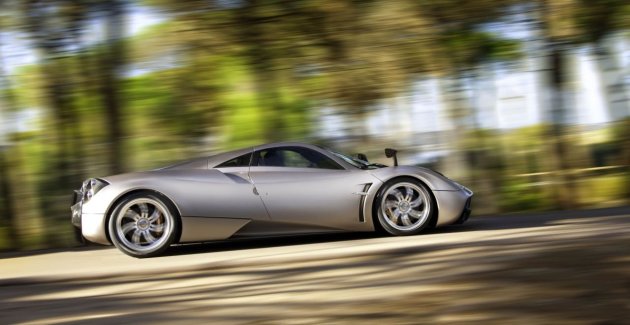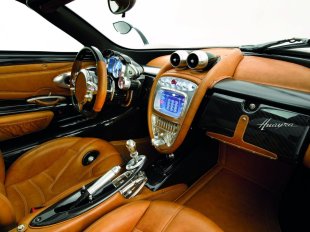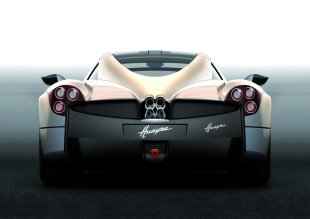The 24 Hours of Le Mans (French: 24 Heures du Mans) is the world's oldest active sports car race in endurance racing, held annually since1923 near the town of Le Mans, France. Commonly known as the Grand Prix of Endurance and Efficiency, race teams have to balance speed against the cars' ability to run for 24 hours without sustaining mechanical damage to the car and manage the cars' consumables, primarily fuel, tyres and braking materials. The endurance of the drivers is likewise tested as drivers frequently spend stints of over two hours behind the wheel before stopping in the pits and allowing a relief driver to take over the driving duties. Drivers then grab what food and rest they can before returning to drive another stint. Today it is mandated that three drivers share each competing vehicle.
The race is organised by the Automobile Club de l'Ouest (ACO) and runs on the Circuit de la Sarthe, a circuit containing a mix of closed public roads and specialist motor racing circuit that are meant not only to test a car and driver's ability to be quick, but also to last over a 24 hour period. The competing teams will race in groups called classes for cars of similar specification while at the same time competing for outright placing amongst all of the classes. Originally, the race was held for cars as they were sold to the general public which were then called Sports Cars compared to the specialist racing cars used in Grands Prix. Over time, the competing vehicles evolved away from their publicly-available road car roots and today, the race is made of two classes specialised enclosed-bodywork two-seat Prototype sports cars and two classes of Grand Touring cars which bear much closer resemblance to high performance sports cars as sold to the public.
Competing teams have had a wide variety of organisation, ranging from competition departments of road car manufacturers who are eager to prove the supremacy of their products, to professional motor racing teams who represent their commercial backers, some of which are also road car manufacturers attempting to win without the expense of setting up their own teams, to amateur race teams, racing as much to compete in the famous race as to claim victory for their commercial partners.
The race has over the years inspired imitating races all over the globe, popularising the 24-hour format at places like Daytona, Nurburgring, Spa-Francorchamps, Sebring and Mount Panorama. Presently, the American Le Mans Series and the European based Le Mans Series of multi-event sports car championships have been spun off from 24 Hours of Le Mans regulations. Other races include the Le Mans Classic, a race for historic Le Mans race cars of years past held on the Circuit de la Sarthe, a motorcycle version of the race which is held on the shortened Bugatti version of the same circuit, a kart race (24 Heures Karting) and a truck race (24 Heures Camions).
The race is held near the height of the European summer in June, leading at times to very hot weather conditions for the drivers, particularly in closed roof vehicles whose cabins can heat up to uncomfortably hot temperatures with generally poor ventilation; rain, however, is not uncommon. The race begins in mid-afternoon, racing through the night and following morning before finishing at the same time the race started, the following day. Over the 24 hour period modern competitors will complete race distances well over 5,000 km (3,110 mi). The present record is 5,410 km (3,360 mi), recorded in the 2010 race. It is a distance over six times longer than the Indianapolis 500, or approximately 18 times longer than a Formula OneGrand Prix.
The race has also spent long periods as a round of the World Sportscar Championship, although Le Mans has always had a stronger reputation than the World Championship, and is presently a round of the FIA World Endurance Championship. The race is also known as a leg of the informal Triple Crown of Motorsport which links Formula One, IndyCars and Sports Car racing to represent a career achievement for drivers. Additionally, it is seen as a leg of Triple Crown of endurance racing, which links the three largest sports car races together with 12 Hours of Sebring and 24 Hours of Daytona forming the other legs.
 Here's the simple math: The Huayra weighs less than 3000 pounds (dry) and has 720 horsepower. Oh, and it also has more than 737 lb-ft of torque, courtesy of a new 60-degree, 6.0-liter twin-turbo V-12 developed expressly for the car by the engine wizards at AMG, replacing the 7.3-liter naturally aspirated AMG V-12 in the Zonda. The mid-mounted engine drives the rear wheels through a seven-speed, single clutch automated manual transmission built by Xtrac, the British company that makes trannys for F1 cars and Le Mans prototypes.
Here's the simple math: The Huayra weighs less than 3000 pounds (dry) and has 720 horsepower. Oh, and it also has more than 737 lb-ft of torque, courtesy of a new 60-degree, 6.0-liter twin-turbo V-12 developed expressly for the car by the engine wizards at AMG, replacing the 7.3-liter naturally aspirated AMG V-12 in the Zonda. The mid-mounted engine drives the rear wheels through a seven-speed, single clutch automated manual transmission built by Xtrac, the British company that makes trannys for F1 cars and Le Mans prototypes.
 A sport + mode is also being developed that will lower the car 10mm, eliminate the auto upshift (which currently happens when you hit the redline in either comfort or sport manual mode), and switch off both traction control and ABS. Galletti also acknowledged that for the typical Huayra customer -- someone who collects supercars and might drive them fast only occasionally -- the transmission needs work to improve comfort and response, particularly when the Huayra is being cruised around town. Among the changes under discussion is a shorter first gear so the engine doesn't rev as high before the clutch engages from a standstill.
A sport + mode is also being developed that will lower the car 10mm, eliminate the auto upshift (which currently happens when you hit the redline in either comfort or sport manual mode), and switch off both traction control and ABS. Galletti also acknowledged that for the typical Huayra customer -- someone who collects supercars and might drive them fast only occasionally -- the transmission needs work to improve comfort and response, particularly when the Huayra is being cruised around town. Among the changes under discussion is a shorter first gear so the engine doesn't rev as high before the clutch engages from a standstill. But that's not what makes the Pagani Huayra special. What makes it special is that it's the singular product of one man's singular passion. "We are a design and research company based on the Renaissance theory of art and science working together," says Argentine-born Horacio Pagani. "That's not our idea -- it's 500 years old. We take our inspiration from Leonardo da Vinci." Pagani has thought through every single detail of this car -- his one-on-one walkthrough of the Huayra's technical highlights lasted more than three hours. He is truly autodom's Renaissance man (he named his first son Leonardo): part designer, part engineer, mostly self-taught, totally obsessed.
But that's not what makes the Pagani Huayra special. What makes it special is that it's the singular product of one man's singular passion. "We are a design and research company based on the Renaissance theory of art and science working together," says Argentine-born Horacio Pagani. "That's not our idea -- it's 500 years old. We take our inspiration from Leonardo da Vinci." Pagani has thought through every single detail of this car -- his one-on-one walkthrough of the Huayra's technical highlights lasted more than three hours. He is truly autodom's Renaissance man (he named his first son Leonardo): part designer, part engineer, mostly self-taught, totally obsessed.